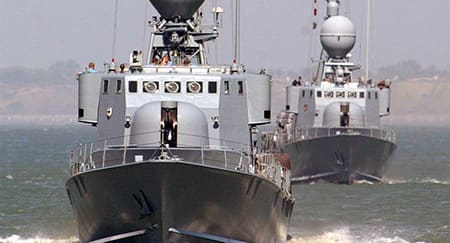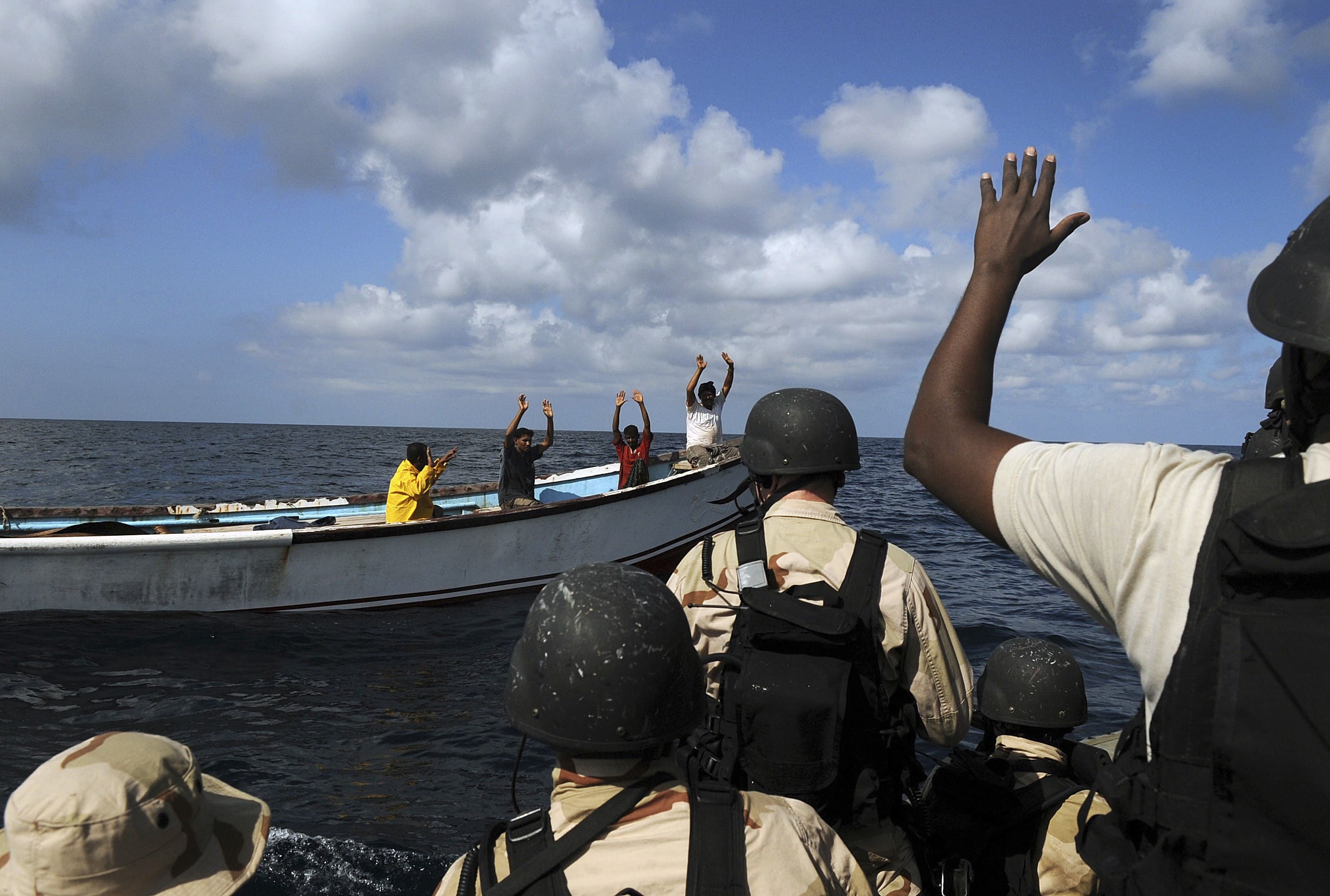There has not been a single incident of terrorist arrests in the Mediterranean since the beginning of counter-terrorist operations started there in 2001. Here, a member of the operation explains how the sea is kept safe.
If the emerging security environment favours finesse over firepower, cooperation over coercion and networks over numbers, then NATO’s role in the Mediterranean offers some important insights to the future. In addition to being a super-highway of seagoing trade, the Mediterranean is one of history’s great strategic crossroads and continues to offer a wealth of opportunity for shaping NATO’s future.
With Operation ACTIVE ENDEAVOUR (OAE) acting as a catalyst, NATO’s dynamic initiatives in Maritime Situational Awareness (MSA) and Maritime Security Operations (MSO) have put it at the forefront of technology application and concept development in the global maritime community.
The core mission of OAE is to deter, defend, and disrupt the use of the Mediterranean Sea for terrorist purposes. From OAE’s inception in late 2001 as NATO’s first and only Article V Operation, the inherent challenge has been to discriminate terrorist activity from the myriad of other sea-going enterprises.
Unlike the Recognized Air Picture (RAP), in which practically every contact can be identified in near real-time and correlated to known patterns, the maritime environment is rife with ambiguity. Limited sensor ranges, weather effects, territorial sea restrictions, and the sheer size of the Mediterranean are central to the environmental challenges. The Recognized Maritime Picture (RMP) is further complicated by the very large and very diverse population of vessels conducting both legitimate and illicit, albeit non-terrorist related, activities in the Mediterranean.
Today’s network represents a quantum leap in surveillance capacity over just a few years ago
However, several factors favour the unique aspects of capturing a Mediterranean RMP. Geographically, the Mediterranean is a large but relatively closed system and has limited access points (such as the Strait of Gibraltar and Suez Canal) that can be closely monitored. Such surveillance is especially effective when the cooperative efforts of national governments and port authorities are brought to bear.
Politically, nations making up the Mediterranean neighbourhood largely agree that their interests are best served by sharing information and resources to develop as comprehensive an RMP as possible.
Against this backdrop of geographic and political factors, Headquarters Maritime Command (HQ MC) Naples’ daunting task is to discriminate the needle of terrorist-related activity against the haystack of the Mediterranean’s complex patchwork of life in the maritime domain. As Task Force Commander of the OAE mission, HQ MC Naples has worked in close cooperation with other NATO entities to develop and implement a tool kit of Maritime Situational Awareness (MSA) networks and processes.
Using these tools, watchstanders in the Maritime Operations Center can process vast amounts of raw data received from shored-based, sea-based, and airborne sensors. Some of this data comes in the form of Automated Identification System (AIS) signals, which all commercial vessels greater than 300 tons are legally obliged to transmit. With an expanding array of networked sensors based in over 15 countries around the Mediterranean and Black Sea, this information system provides real-time data on a daily average of 8,000 contacts.
Today’s network represents a quantum leap in surveillance capacity over just a few years ago. With so much raw information available, the trend in MSA is to develop technological tools that can compare in real-time the transmitted data to database information in order to validate the contacts’ names, registry numbers, cargo, owners, recent and upcoming ports of call, etc.
These tools enable watchstanders to focus on anomalous contacts and concentrate intelligence and maritime analyst resources on irregular behaviour, such as unexplained loitering or course deviations, in order to make the most of limited assets.
AWACS flights have encouraged the development of relationships and adoption of new techniques
Recognizing that shore-based sensors are integral to Maritime Situational Awareness and that nations have an interest in accessing the system’s cumulative raw data, HQ MC Naples has made the expansion of this network a cornerstone for reaching out to partner nations, largely under the aegis of the Mediterranean Dialogue. This initiative, borne of genuine shared interests, has proven highly effective in building relationships that, in many cases, have developed into other areas of military cooperation. In addition, national efforts such as Turkey’s Operation BLACK SEA HARMONY, Italy’s Operation CONSTANT VIGILANCE or France and Spain’s Operation LEVRIER, as well as international efforts such as the United Nations Mission in Lebanon (UNIFIL) also provide opportunities for fruitful cooperation at the tactical level.
The use of airborne sensors greatly adds to Mediterranean surveillance capacity, especially in areas of the Mediterranean that lay beyond shore-based sensors. HQ MC MAR Naples continues to employ traditional Maritime Patrol Aircraft from a variety of NATO nations in dedicated sorties for OAE. In addition, E-3 aircraft from both the NATO Airborne Early Warning (NAEW) Squadron and from national contributions have flown missions in the past year dedicated to building RMP for the operation. These AWACS flights have encouraged the development of cross-component staff relationships and the adoption of new techniques and procedures, both of which have had positive effects for NATO’s joint operability.
HQ MC Naples similarly leverages the two Standing NATO Maritime Groups (SNMGs) and the two Standing NATO Mine Countermeasures Groups (SNMCMGs) in providing elevated MSA in select areas. Termed “Surge Operations”, these focused efforts last one or two weeks and are designed to achieve either surveillance effects or deterrence effects, with the relative weight of effort depending on available assets, geographic location, and information operations priorities.
During these surge operations, NATO has also employed naval asset contributions from NATO nations that do not normally contribute to the Mediterranean-based SNMG-2 and SNMCMG-2, such as Poland, Bulgaria and Romania. This provides a challenging real-world context in which NATO units can practice interoperability.
Furthermore, NATO partners, such as Ukraine and Russia, have also contributed forces to OAE surge operations, providing valuable opportunities for cooperation, interoperability, and mutual awareness while contributing to a relevant real-world mission.
Operation Active Endeavour experience was already used in NATO’s first counter-Piracy operation (ALLIED PROVIDER) around the Horn of Africa in 2008
The Maritime Operations Centre in HQ MC Naples also routinely identifies anomalous information that is not terrorist-related but is of interest to regional national authorities. Whether this information is an indicator of illegal activity or simply errors in transmitted AIS data is not always clear. On more than one occasion though, national authorities have acted to the benefit of their wider national safety and security interest.
More significantly, such exchange of information builds mutual understanding, trust and shared awareness. As NATO’s MSA toolkit evolves, it can expect to become increasingly a partner of choice with national and multi-national organizations seeking to share information about the Mediterranean maritime patterns.
Integral to conducting OAE surge operations, HQ MC Naples executes a robust Information Operations (IO) campaign aimed at educating the maritime community on NATO’s commitment to denying terrorists the use of the sea. These information efforts maximize the deterrent and disruptive effects by communicating to owners and operators of commercial vessels that NATO is actively patrolling the Mediterranean and is closely monitoring all maritime patterns of activity. Another goal is to educate the masters of larger vessels that NATO is ready to respond and also to provide instructions and points of contact for them to report suspicious behaviour, further expanding the information network.
Using its OAE experience, HQ MC Naples extended its reach into commanding NATO’s first counter-Piracy operation (ALLIED PROVIDER (OAP)) around the Horn of Africa in 2008. Under HQ MC Naples’ command, SNMG-2 operated in the Gulf of Aden and Somali Basin for three months to provide security to United Nations (UN) World Food Programme (WFP) vessels delivering humanitarian aid to Somalia and to conduct anti-piracy patrols along shipping routes. This operation was mounted in just 2 weeks following NATO's positive response to UN Secretary General Ban Ki-Moon's request for assistance in securing WFP deliveries to Somalia. This rapid military response to a political imperative provides a classic example of the agility of maritime forces, in general, and the Standing NATO Maritime Groups, in particular.
The success of OAP led, in part, to NATO’s now enduring commitment to combating piracy. This started with OAP becoming Operation ALLIED PROTECTOR with a broader counter-piracy remit. Following handover of command to HQ MC Northwood in 2009, that operation further evolved into today’s contribution to international efforts to counter-piracy in and around the Horn of Africa and Indian Ocean - Operation OCEAN SHIELD (OOS), which was recently extended until 2012.
Maritime Situational Awareness tools promise to be far more adaptable to future threats than torpedoes or anti-ship cruise missiles
As HQ MC Naples and HQ MC Northwood continue to develop the tools, organisation, and doctrine for addressing terrorist and pirate activity on the high seas, we must ask ourselves how well we will be poised for the emerging threats in tomorrow’s maritime domain. It would seem that our focus will remain on understanding the broader patterns of maritime activity.
Perhaps the threats and risks related to illicit maritime activity such as drug smuggling, arms smuggling, human trafficking, and illegal migration will one day grow beyond the capacity of national law enforcement agencies. If so, the MSA tools and mindset for discerning the good from the bad in the maritime domain, being forged on the anvil of OAE and more recently OOS, will largely be in place for that future. While NATO navies must maintain their traditional naval mission capabilities, these MSA tools promise to be far more adaptable to future threats than would be a torpedo or anti-ship cruise missile.
In the meantime, NATO’s maritime community will continue to influence the legal framework, develop the doctrine, match the means to the ends, and perfect the tactics to make the sea as unwelcoming as possible to terrorists and pirates alike.


